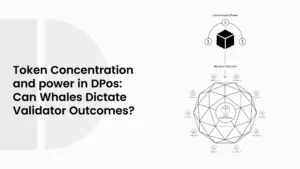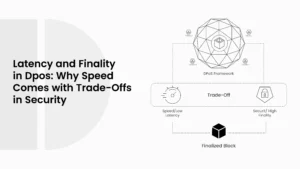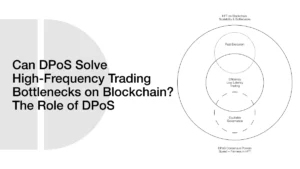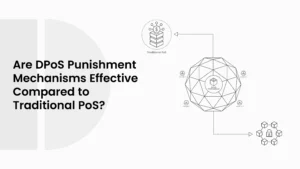Can Hybrid Consensus Models Outperform Pure DPoS: A Real-Life Study
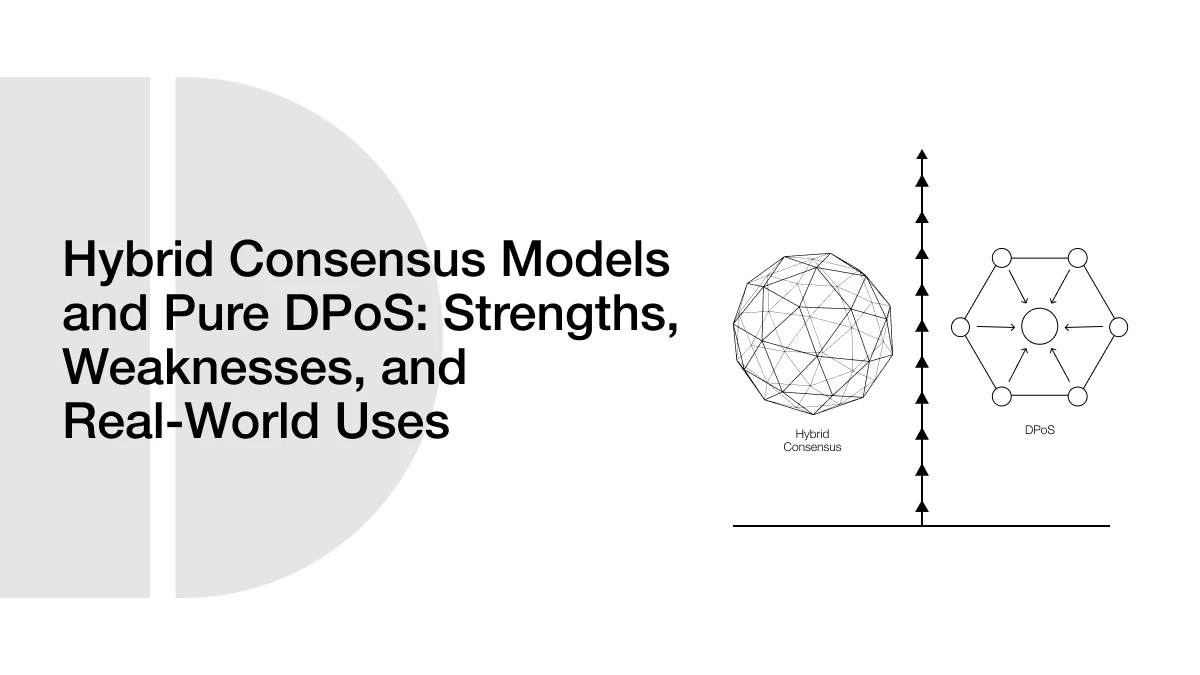
Blockchain is the technology behind cryptocurrencies and many new digital systems. At the heart of every blockchain is something called a consensus algorithm. This is the rulebook that helps computers in the network agree on which transactions are real and valid. Without consensus, a blockchain cannot work because no one would trust the data.
- What Is Delegated Proof of Stake (DPoS)?
- Key Features of DPoS vs PoW vs PoS
- What Are Hybrid Consensus Models?
- Why Combine Algorithms?
- How Hybrid Consensus Models Work
- Real-Life Example
- Hybrid Model vs Pure DPoS in Block Generation
- Strengths of Hybrid Consensus Models
- Security Improvements
- Fairer Block Generation
- Efficiency Gains
- Security and Efficiency Comparison
- Weaknesses of Hybrid Consensus Models
- Complexity in Design and Maintenance
- Token and Power Monopoly Risks
- Practical and Adoption Challenges
- Weaknesses of Hybrid vs Pure DPoS
- Real-World Applications of Hybrid Models
- Smart Cities and IoT Networks
- Finance and Cross-Border Payments
- Supply Chain and Business Data
- Where Hybrid Consensus Could Be Used
- Can Hybrid Consensus Really Outperform Pure DPoS?
- When Hybrid Models Are Better
- When Pure DPoS Still Wins
- Hybrid Consensus vs Pure DPoS
- Conclusion
- Frequently Asked Questions (FAQs)
- Glossary of Key Terms
Over the years, many types of consensus have been created. The most famous one is Proof of Work (PoW), which powers Bitcoin. Another important one is Proof of Stake (PoS). A newer version, called Delegated Proof of Stake (DPoS), is popular for fast and cheap transactions. But even DPoS has its problems, such as the risk of monopoly and less decentralization.
This is where hybrid consensus models come in. A hybrid system mixes two or more algorithms to cover each other’s weaknesses. For example, researchers have studied combining Proof of Probability (PoP) with DPoS to improve both security and fairness. The big question this blog will explore is: Can hybrid consensus models really outperform pure DPoS?
What Is Delegated Proof of Stake (DPoS)?
Delegated Proof of Stake, or DPoS, is one of the fastest and most efficient consensus systems. It was first used by projects like BitShares and EOS. Instead of letting every computer compete to solve puzzles like in Bitcoin, DPoS uses voting. People who own tokens vote for special computers, called delegates or supernodes, who are trusted to make blocks and confirm transactions.
This method saves time and energy. A block in a DPoS network can be created in just 1 second, compared to 10 minutes in Bitcoin. This is why DPoS is often used in blockchains that want to handle many transactions quickly.
But there are also problems. Because only a few supernodes make the decisions, the system is not fully decentralized. If those nodes team up, they can control the network. This means DPoS trades some decentralization for higher speed and efficiency (Wang et al., 2020).
Another issue is that token holders with a lot of coins have more voting power. This can create a monopoly where the rich get richer. Still, DPoS is better than PoW or PoS in many cases because it gives everyday users a chance to vote and still keeps the system fast.
ALSO READ: How DPoS Validator-as-a-Service Will Shape the Next Staking Trend in 2025 and Beyond
Key Features of DPoS vs PoW vs PoS
| Feature | PoW (Proof of Work) | PoS (Proof of Stake) | DPoS (Delegated Proof of Stake) |
| Speed | Slow (10 mins/block) | Medium | Very fast (1 sec/block) |
| Energy Use | Very high | Low | Very low |
| Decentralization | High at start, but mining pools dominate | Medium, risk of rich dominating | Lower, few supernodes control |
| Attack Risks | 51% computing power | 51% token ownership | Collusion among delegates |
What Are Hybrid Consensus Models?
A hybrid consensus model is a system that combines two or more consensus algorithms. Instead of relying on a single method to agree on transactions, the blockchain uses a mix. This is done to balance speed, fairness, and security.
Why is this important? Because no single algorithm is perfect. Proof of Work (PoW) wastes energy. Proof of Stake (PoS) can become unfair to smaller players. Delegated Proof of Stake (DPoS) is very fast but less decentralized. By blending two systems, the goal is to keep the good parts of each and remove the bad parts.
One example studied by researchers is a mix of Proof of Probability (PoP) and DPoS. In this design, PoP handles block generation and DPoS handles block verification. This means that the power to create blocks is distributed more evenly, while DPoS ensures blocks are confirmed quickly (Wang, Li, & Li, 2020).
Why Combine Algorithms?
- Balance weaknesses: Each consensus has flaws. By mixing them, one can cover for the other.
- Better fairness: PoP reduces the advantage of nodes with huge computing power.
- More security: Attacks require both computing power and tokens, which is very costly.
- Higher efficiency: DPoS keeps the network fast while PoP keeps it fair.
This approach is becoming popular in academic research. Some papers suggest that hybrid models could become the next step in blockchain growth.
How Hybrid Consensus Models Work
Hybrid consensus models may sound complex, but the idea is simple. Imagine dividing the job into two parts: making the blocks and checking the blocks.
In a PoP + DPoS hybrid system:
PoP Nodes generate blocks
- Nodes try to solve hash problems, but with a twist.
- A waiting-time system makes it harder for nodes with big computing power to always win.
- This keeps things fair for smaller players.
DPoS Supernodes verify the blocks
- Token holders vote for trusted supernodes.
- These supernodes check if the block is valid.
- If most agree, the block is added to the chain.
This way, an attacker cannot simply control the network by having either more computing power or more tokens. They would need both, which is much harder and more expensive.
Real-Life Example
Let’s say someone wants to cheat the system. In pure DPoS, they might just try to buy votes or bribe supernodes. In PoW, they would need to own most of the mining power. But in a hybrid model, they would need to do both at the same time: control more than 51% of computing power and more than 51% of tokens. This makes attacks almost impossible.
ALSO READ: Breaking Barriers: Why DPoS Could Be the Future of Borderless Credit and Microfinance
Hybrid Model vs Pure DPoS in Block Generation
| Step | Pure DPoS | Hybrid (PoP + DPoS) | Benefits of Hybrid |
| Block Creation | Supernodes generate blocks | PoP nodes generate blocks | Fairer distribution of block power |
| Block Verification | Supernodes verify blocks | Supernodes verify blocks | Keeps speed and efficiency |
| Attack Resistance | Needs 51% of votes | Needs 51% power + 51% tokens | Much harder to attack |
| Decentralization | Weaker, fewer nodes in control | Stronger, more nodes involved | More fair and open |
Strengths of Hybrid Consensus Models
Hybrid consensus models are designed to address the weaknesses of pure systems like DPoS. By mixing algorithms, they create stronger, fairer, and more secure blockchains. Let’s break down the main advantages.
Security Improvements
One of the biggest strengths of hybrid systems is better security. In DPoS, if a small group of supernodes team up, they can control the network. This is called collusion. It reduces trust and makes the system easy to manipulate.
In a hybrid model, the risk of collusion is much lower. That’s because block generation is separated from block verification. Even if someone tries to cheat, they would need both majority computing power and majority tokens. This makes a 51% attack far more expensive and less likely.
Hybrid systems also add extra protection against attacks like selfish mining and Sybil attacks. Since different nodes are responsible for various tasks, it is harder for one group to dominate the network.
Fairer Block Generation
In pure DPoS, supernodes control both making and checking blocks. This gives them a lot of power. In hybrid systems, PoP nodes get to create blocks, while DPoS nodes only verify them.
This means smaller players have a chance to win rewards, not just the top delegates. The waiting-time rule in PoP also helps prevent big computing players from always winning. This makes the system more fair and less predictable.
As a result, normal users are more likely to stay active in the system, which keeps the blockchain more decentralized.
Efficiency Gains
One of the reasons why people love DPoS is its speed. Transactions are confirmed in seconds, which makes it much better for real-world use than slower systems like PoW. But when you add PoP into the mix, the system does not lose this advantage.
Hybrid models still allow for fast verification through DPoS, while PoP balances block creation. In fact, the design helps keep block times stable. Even in the worst case, blocks are confirmed at Bitcoin speed (10 minutes). But in the best case, they can be confirmed in just 1 minute.
This balance means that hybrid systems can offer both speed and fairness, something single algorithms often fail to achieve.
Security and Efficiency Comparison
| Feature / Attack Type | Pure DPoS | Hybrid (PoP + DPoS) | Why Hybrid Is Better |
| 51% Attack | Needs 51% votes | Needs 51% votes + 51% power | Much higher cost for the attacker |
| Collusion Risk | High (few supernodes in control) | Lower (block creation + verification split) | Less centralization risk |
| Selfish Mining | Possible | Very unlikely | PoP reduces miner advantage |
| Sybil Attack | Medium risk | Very low risk | Hybrid adds multiple barriers |
| Block Speed | Very fast (seconds) | Fast + fair (1–10 min range) | Keeps efficiency while fair |
Weaknesses of Hybrid Consensus Models
Even though hybrid consensus systems sound promising, they are not perfect. Like any new idea, they come with their own set of challenges. While they can outperform DPoS in many ways, they also add extra complexity and new risks.
Complexity in Design and Maintenance
One of the main weaknesses is complexity. Pure DPoS is easy to understand: token holders vote, and delegates produce and check blocks. But when you add another system like PoP, the process becomes more complicated.
Now, one group of nodes makes blocks, and another group checks them. Rules like waiting time, expected values, and sublinear voting functions make the system harder to design, test, and upgrade. This extra complexity might also confuse developers and slow down adoption.
Token and Power Monopoly Risks
Another issue is that hybrid systems still depend on tokens and computing power. Even though attacks are harder, they are not impossible. If a group of players owns both many tokens and strong computing power, they could still influence the network.
In other words, the rich can still get richer. While PoP reduces the advantage of raw computing, and sublinear voting reduces the advantage of huge token holders, there is still a risk that big players might dominate over time.
Practical and Adoption Challenges
Hybrid models are mostly studied in academic research. Very few large-scale blockchains use them in the real world. This means no one fully knows how they perform with millions of users.
There are also governance challenges. Who sets the rules for waiting time? How are malicious nodes punished? What happens if a PoP node and DPoS node disagree? These questions are not fully answered yet.
In practice, businesses and developers may choose simpler systems like DPoS because they are already proven and easier to run. Hybrid systems, on the other hand, might take years to become mainstream.
Weaknesses of Hybrid vs Pure DPoS
| Weakness Area | Pure DPoS | Hybrid (PoP + DPoS) | Challenge Introduced |
| Complexity | Simple voting and supernodes | Multiple steps (PoP + DPoS rules) | Harder to design & maintain |
| Monopoly Risk | Token-rich can dominate | Token + computing still matter | Big players may still control |
| Adoption | Widely used in projects | Mostly experimental in research | Limited real-world testing |
| Governance | Clear voting system | Needs punishment + waiting-time rules | Still not fully defined |
Real-World Applications of Hybrid Models
Hybrid consensus systems are still new, but they have big potential in the real world. Many researchers believe they could solve problems that pure systems like DPoS or PoW cannot handle. Because they mix speed, security, and fairness, they are useful for industries that deal with lots of transactions, sensitive data, and global users.
Smart Cities and IoT Networks
One of the best uses of hybrid consensus is in smart cities. Smart cities rely on millions of devices, from traffic lights to sensors, that send and receive data every second. Using a single system like PoW would be too slow and waste too much energy. DPoS is faster, but it might not be secure enough on its own.
By combining PoP and DPoS, smart cities could get a balance: fairness for smaller devices and speed for large networks. Research shows this mix can be a good match for distributed systems like IoT.
Finance and Cross-Border Payments
Banks and payment companies are always looking for faster and safer systems. Pure DPoS can confirm payments quickly, but it still faces risks if a small group of nodes colludes. A hybrid system makes it more expensive for attackers and increases trust.
For cross-border payments, this balance of speed and security is critical. Hybrid models could reduce fraud while keeping fees low, making them useful for the finance industry.
Supply Chain and Business Data
In supply chains, companies need to track goods from factories to customers. Data has to be secure to prevent cheating or falsifying records. At the same time, the system must be efficient because many companies and devices are involved.
A hybrid consensus could provide this trust. PoP ensures no single party dominates, while DPoS ensures transactions are fast. This makes hybrid systems a strong option for industries like shipping, agriculture, and retail.
Where Hybrid Consensus Could Be Used
| Industry | Why Hybrid Helps | Example Use Case |
| Smart Cities | Handles millions of IoT devices fairly & fast | Traffic control, energy grid management |
| Finance | Safer payments, harder to attack | Cross-border digital currency transfers |
| Supply Chain | Secure and transparent tracking | Food safety, product authentication |
| Healthcare | Protects sensitive patient data + fast checks | Medical records, secure prescriptions |
| Government | Fair elections and voting systems | Digital ID verification, e-voting |
Can Hybrid Consensus Really Outperform Pure DPoS?
Pure DPoS is loved for its speed and simplicity. It allows fast block production, low transaction fees, and has been used in many popular blockchain projects. But its main weakness is that power ends up in the hands of a few supernodes. This weakens decentralization and can lead to collusion.
Hybrid systems, like the PoP + DPoS model studied by researchers, are designed to fix these weaknesses. By splitting block creation and block verification, they make the system fairer and much harder to attack.
But hybrid systems are also more complex. They are not yet widely tested in global, real-world environments. So, the answer depends on what the blockchain is being used for.
When Hybrid Models Are Better
Hybrid systems outperform DPoS when security and fairness are top priorities. For example:
- In finance and banking, where even a small risk of fraud is unacceptable.
- In government or voting systems, where decentralization and trust matter more than just speed.
- In smart cities or IoT, where millions of small devices must take part fairly.
Here, hybrid systems can be safer, fairer, and more balanced.
When Pure DPoS Still Wins
Pure DPoS can still be better in situations where simplicity and speed are more important than decentralization. For example:
- In small blockchain projects with fewer users, where attacks are unlikely.
- In gaming or social apps, where transaction speed matters more than extreme security.
- When developers want a proven, easy-to-manage system.
In these cases, pure DPoS is enough and easier to use.
ALSO READ: How Stablecoins Strengthen Liquidity, Speed, and Stability in DPoS Networks
Hybrid Consensus vs Pure DPoS
| Feature | Pure DPoS | Hybrid (PoP + DPoS) | Winner |
| Speed | Very fast (1 sec block) | Fast, but 1–10 min range | DPoS |
| Security | Moderate (collusion risk) | Strong (needs tokens + power to attack) | Hybrid |
| Fairness | Lower (few supernodes dominate) | Higher (PoP spreads block rewards) | Hybrid |
| Decentralization | Medium | Stronger | Hybrid |
| Complexity | Simple and proven | Complex and experimental | DPoS |
| Real-World Adoption | Widely used (EOS, BitShares, etc.) | Still in research stage | DPoS |
Conclusion
Hybrid systems like PoP + DPoS bring stronger security, better fairness, and more decentralization. By splitting block creation and verification, they make it harder for attackers and give smaller players more chances to participate. This makes them ideal for industries like finance, supply chain, government, and smart cities, where trust and security are critical.
But hybrid systems also face big challenges. They are complex to design, harder to adopt, and still mostly tested in research environments. On the other hand, pure DPoS remains simple, fast, and widely used. That’s why it continues to be the choice for many blockchain projects today.
In the future, people may not see one system dominate. Instead, different blockchains will choose different consensus models based on their needs. For global finance and critical infrastructure, hybrid models may rise. For everyday apps and high-speed systems, DPoS may still lead.
In short, hybrid consensus is more secure and fair, while pure DPoS is simpler and faster. The future of blockchain might rely on both working side by side.
Frequently Asked Questions (FAQs)
- What is the biggest weakness of DPoS?
The main weakness of DPoS is centralization. A small group of supernodes can control block creation and verification, which increases the risk of collusion. - Why are hybrid consensus models being researched?
Hybrid models are studied to fix the weaknesses of single systems like PoW, PoS, or DPoS. By combining them, researchers aim for a system that is fast, secure, and fair. - Are hybrid consensus systems faster than DPoS?
Not always. DPoS is usually faster because it has fewer steps. Hybrid systems can be just as fast, but they often trade a little speed for better security and fairness. - Can hybrid models stop a 51% attack?
Yes. In a hybrid like PoP + DPoS, an attacker needs both 51% of computing power and 51% of tokens. This makes attacks much more expensive and unlikely. - Where are hybrid consensus models being tested today?
They are mainly tested in academic research, but industries like finance, supply chain, and smart cities are exploring them for real-world use.
Glossary of Key Terms
- Consensus Algorithm: The method blockchains use to agree on valid transactions.
- DPoS (Delegated Proof of Stake): A system where token holders vote for supernodes who make and check blocks.
- Hybrid Consensus: A mix of two or more consensus algorithms to balance strengths and weaknesses.
- PoP (Proof of Probability): A system that reduces the advantage of powerful nodes by adding randomness.
- 51% Attack: When one group controls most of the network’s resources and can cheat the system.
- Sybil Attack: An attack where one user pretends to be many nodes to take over the network.

